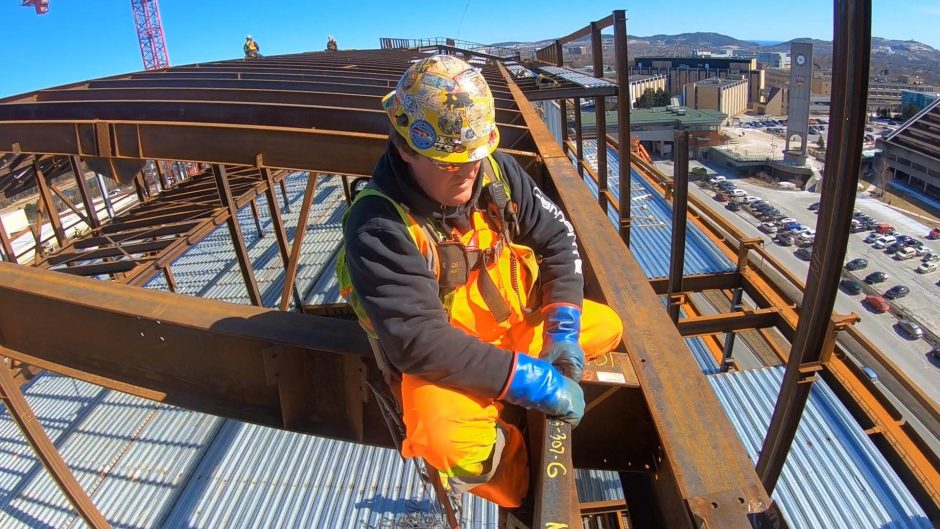April 18, 2018
High above the campus of Memorial University, Gene Lewis is perched on a steel beam.
It’s so narrow that his toes hang over one edge, and his heels over the other.
Forty metres below, traffic whirs up and down Prince Philip Parkway. A stunning, unobstructed view of St. John’s stretches out all around him.
But Lewis is focused only on what’s above: another steel beam, suspended in mid-air by a giant tower crane.
It’s his job to catch it.
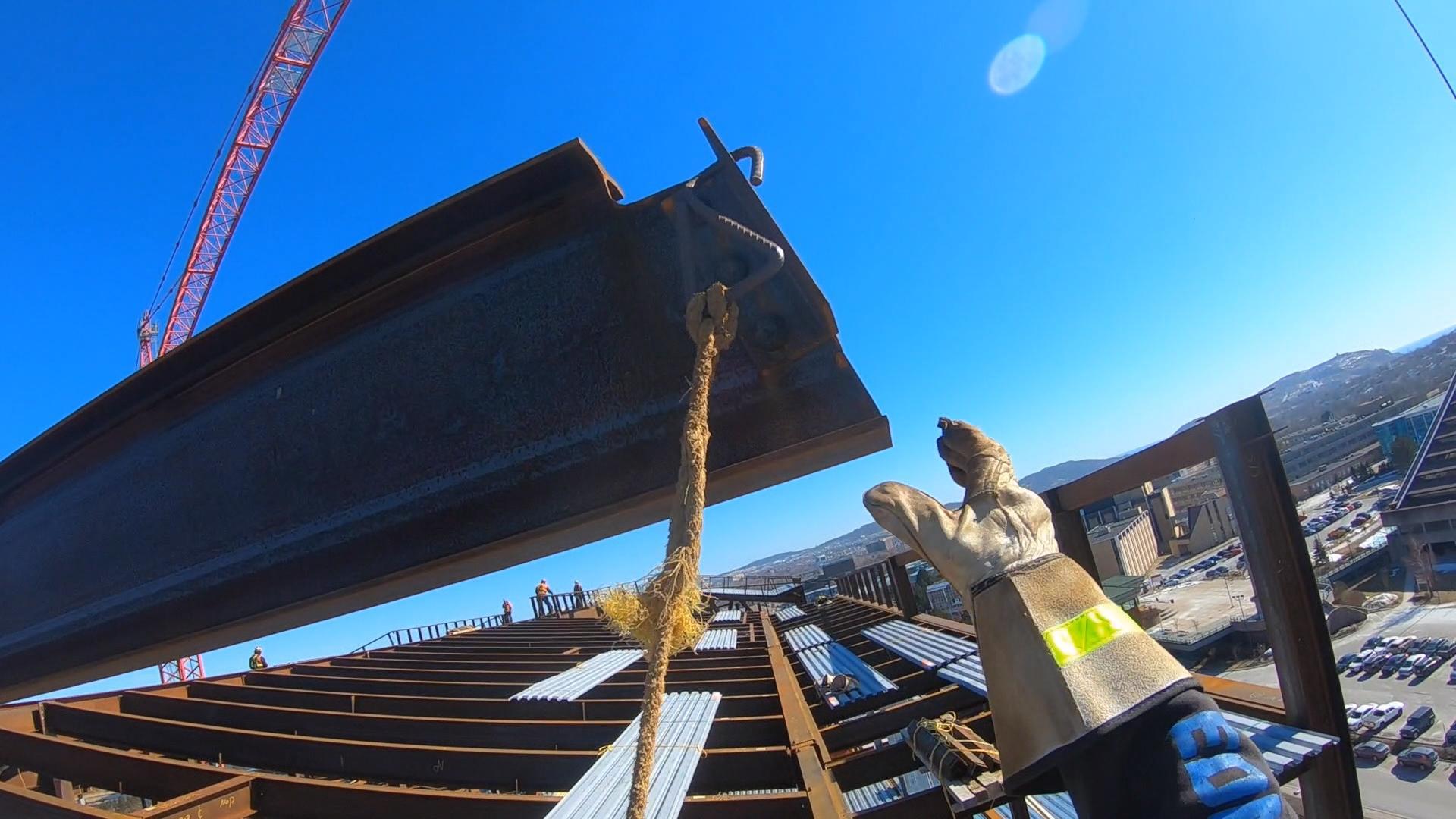
One piece of steel at a time, Memorial University’s new Core Science Facility has been taking shape since last summer.
Now the steelwork is virtually complete, and the building’s skeleton looms over the campus.
It’s a complex feat of engineering and technology, but the structural steel was assembled the old-fashioned way: by hand.
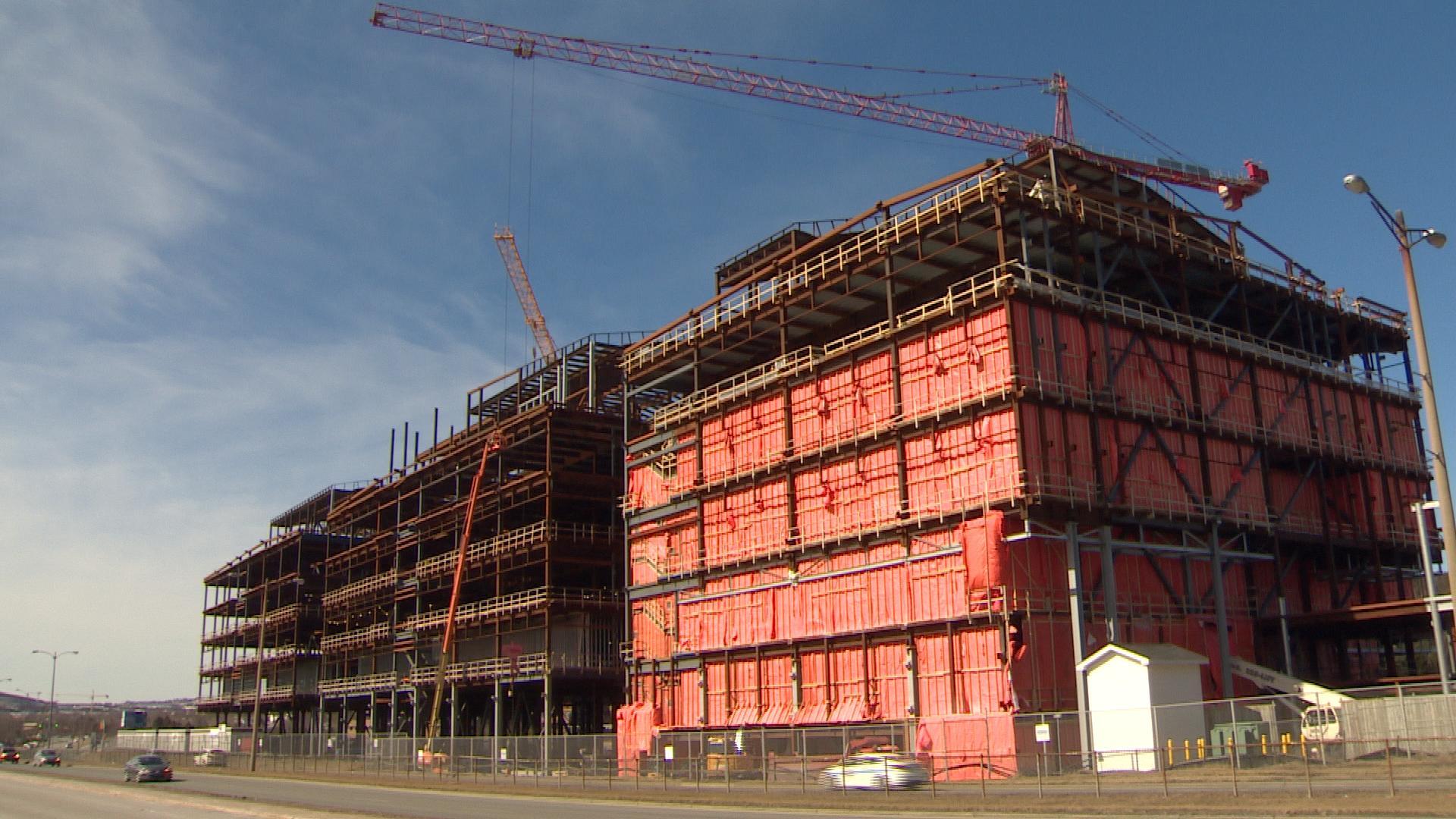
Memorial University and general contractor Marco agreed to give CBC News special access to the construction site.
But walking the high steel is far too dangerous for anyone but the steelworkers.
So, to show you how it’s done, steelworker Gene Lewis and tower crane operator Gary Lewis (no relation) wore GoPro cameras on their helmets during one of their final shifts.
If you’re afraid of heights, take a deep breath before watching these videos.
Being an ironworker takes skill, patience and expertise, but most of all, it takes nerves of steel.
As you’ll see in the video below, just getting to the top of the construction site would make many people weak in the knees.
The connectors
“Trolley out to me! Or swing over.”
Lewis yells instructions to Ed Roche, who is perched opposite him on another beam. Lewis and Roche are “connectors,” and their job is just what it sounds like: connecting pieces of steel to the building.
“Come down!” Lewis yells to Roche, who radios the signal to the crane operator.
The beam drops a few feet, enough for Lewis to grab on to an attached rope. He guides the dangling beam down below his feet, where it intersects with the beam he’s standing on.
Now comes the hard part.
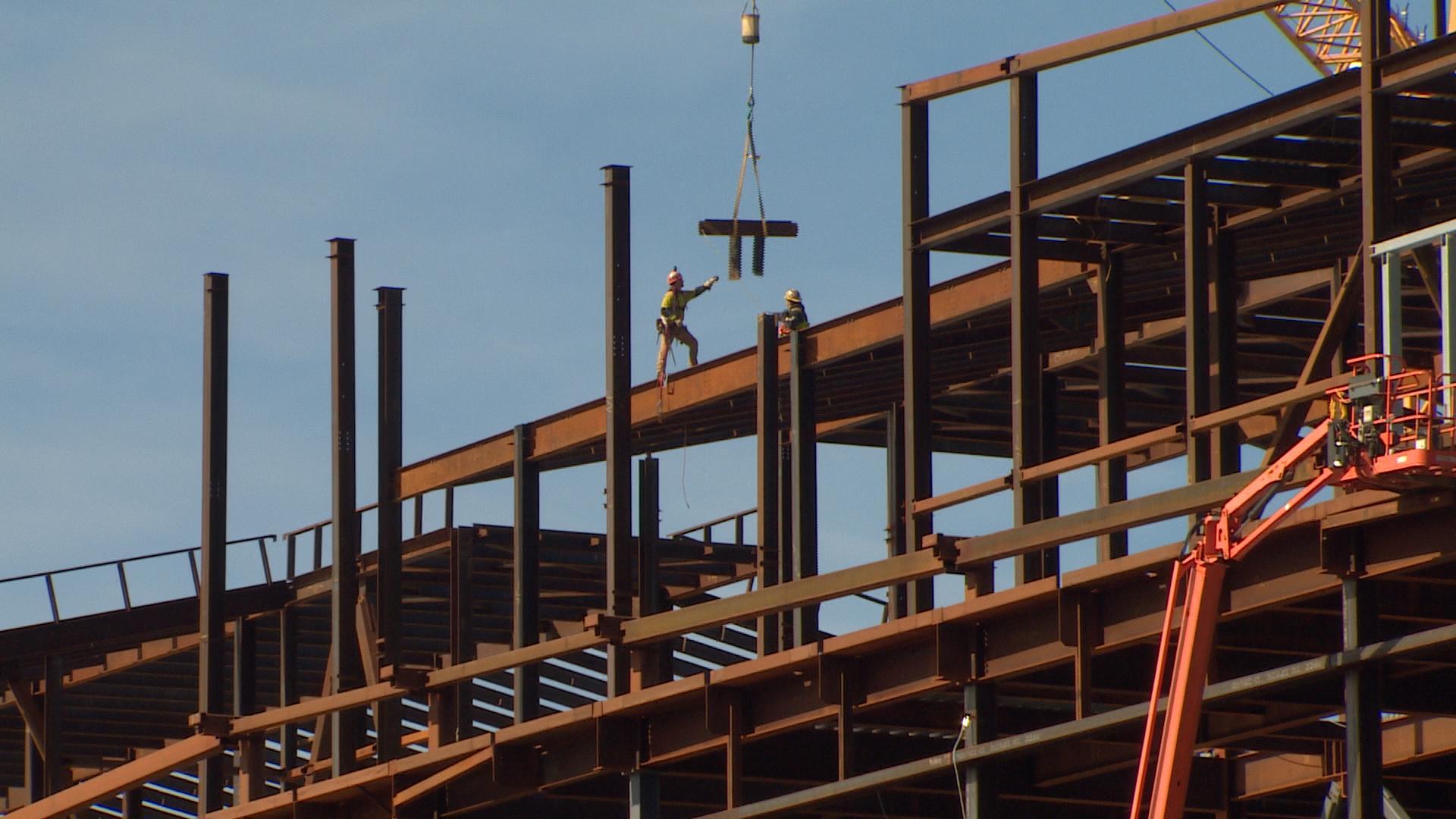
“Touch up!” he yells to Roche, who repeats the command into the radio. Lewis has to line up the pre-drilled holes of both beams, so he can fasten them with nuts and bolts.
But the heavy, free-hanging beam swings around like a pendulum.
The crane operator makes a tiny height adjustment, and Lewis uses some muscle to counter the beam’s momentum.
With the holes aligned, he skewers both beams with the tapered end of a special wrench.
It’s enough to hold the new beam in place, while Lewis pulls out a nut and bolt and then fastens the beams together.
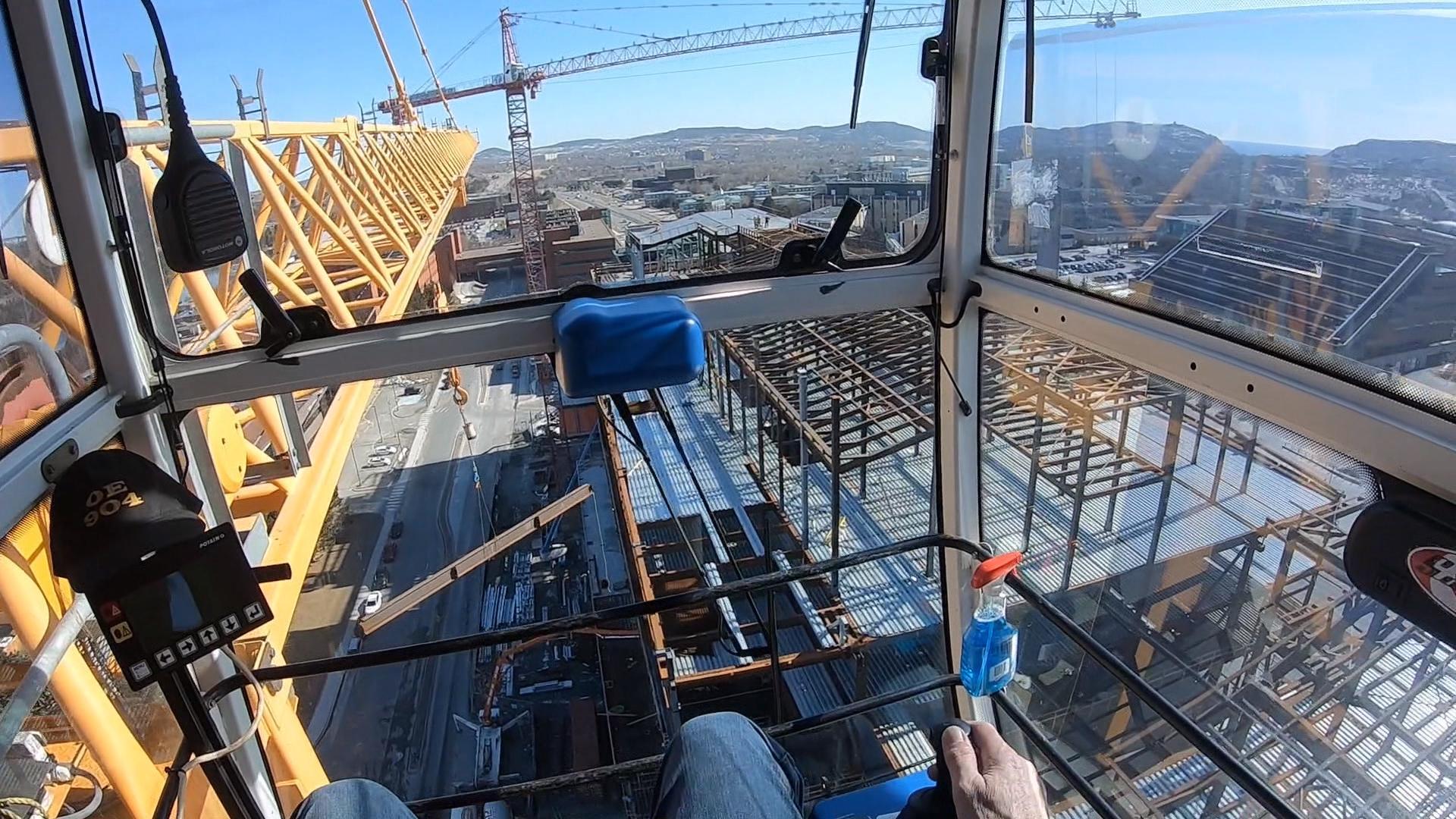
Up on the high steel, there’s no room for error.
Lewis has to be certain that every bolt and every beam is secure. His own safety depends on it, because the last step in the installation is for Lewis to walk out onto the new beam and disconnect it from the crane hook.
“Good?” he asks Roche. “Oh yeah,” comes the reply.
With no hesitation, Lewis walks confidently across the narrow beam, unhooks it, turns around and shimmies back.
That’s one.
As he waits for the next beam to come swinging his way, the magnificent view of St. John’s is his to enjoy.
To see an unedited video of Lewis connecting a beam, watch the video below.
No fear
When Lewis is back on solid ground, I have one big question for him.
“Don’t you get scared?”
“I do and I don’t, you know what I mean? You got to have no fear up there.” he said.
“Just don’t think about falling, just work safe, get the job done, and go home safe to your family.”
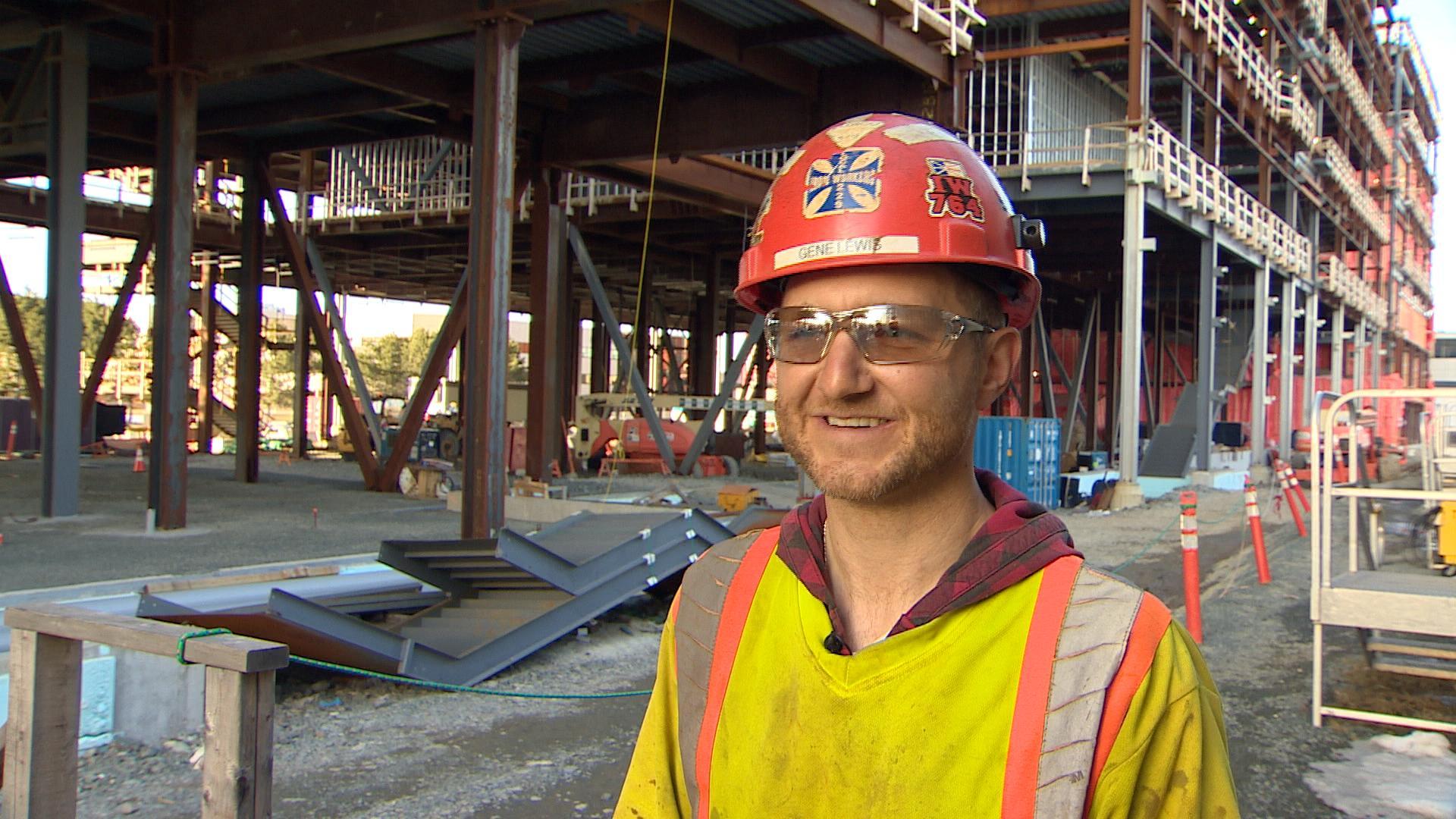
I ask the same question to Gary Lewis, the tower crane operator.
“I was actually nervous of heights when I first started tower cranes,” Lewis said.
“First tower crane I went up, I went right to the highest part of it and jumped all around it, and it didn’t move. I went out to the tip and jumped, this is good. Not jumped off it, jumped on it, bounced around it.
"I said OK, it’s all good. I can do this.”
Lewis doesn’t have to balance on a narrow beam, but there’s only one way to the top of the tower crane: climbing hand over hand up a ladder, 50 metres straight up.
To see it from Lewis’s point of view, watch the video below.
For Gary Lewis, every shift begins and ends with that ladder.
He inspects the crane as he goes, pausing here and there to break away buildups of ice. He spends the whole 12-hour workday inside the operator's cabin, without coming down unless he absolutely has to.
When I ask him to describe the process of connecting high steel, he makes it sound as simple as stacking toy blocks.
“I just pick it up off the ground,” he said. “Then — one at a time — they go up to the boys at the connecting place and ... eventually, poof! Voila, we’ve got the end product.”
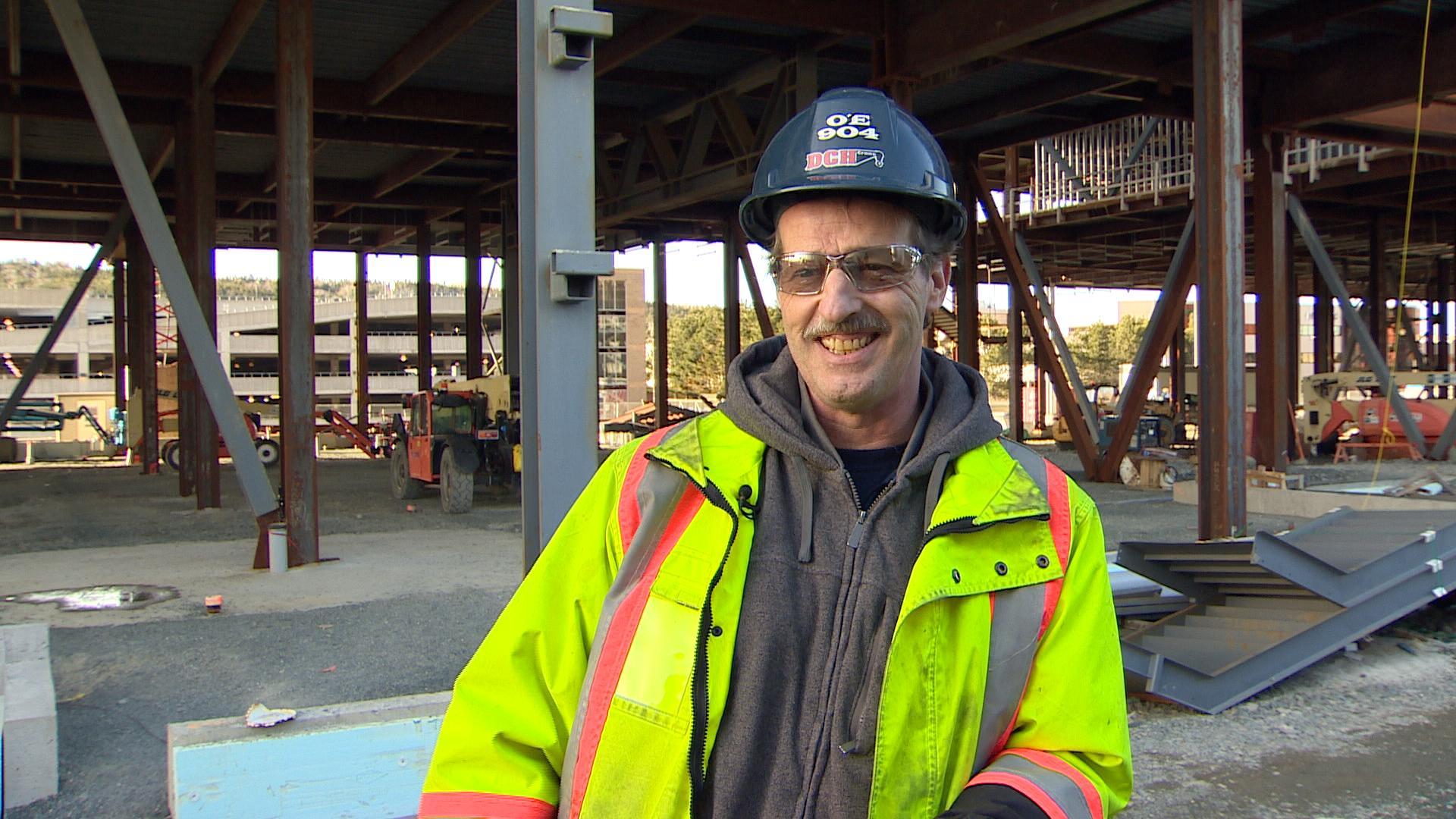
Building for the future
While the ironworkers focus on the piece of steel in front of them, Ann Browne keeps her eye on the big picture.
“It’s a very, very complicated thing.” said Browne, Memorial’s associate vice-president of facilities.
“But, it’s a lot of fun. It’s my third large project of this size, and it’s exciting. You take a piece of ground, and all of a sudden, something like this comes out.”
Browne, the university’s lead on the construction project, has spent decades in construction management, and overseen buildings in New York City and at Queen’s University in Kingston, Ont. She was lured here from Queen’s by the prospect of working on the new science building.
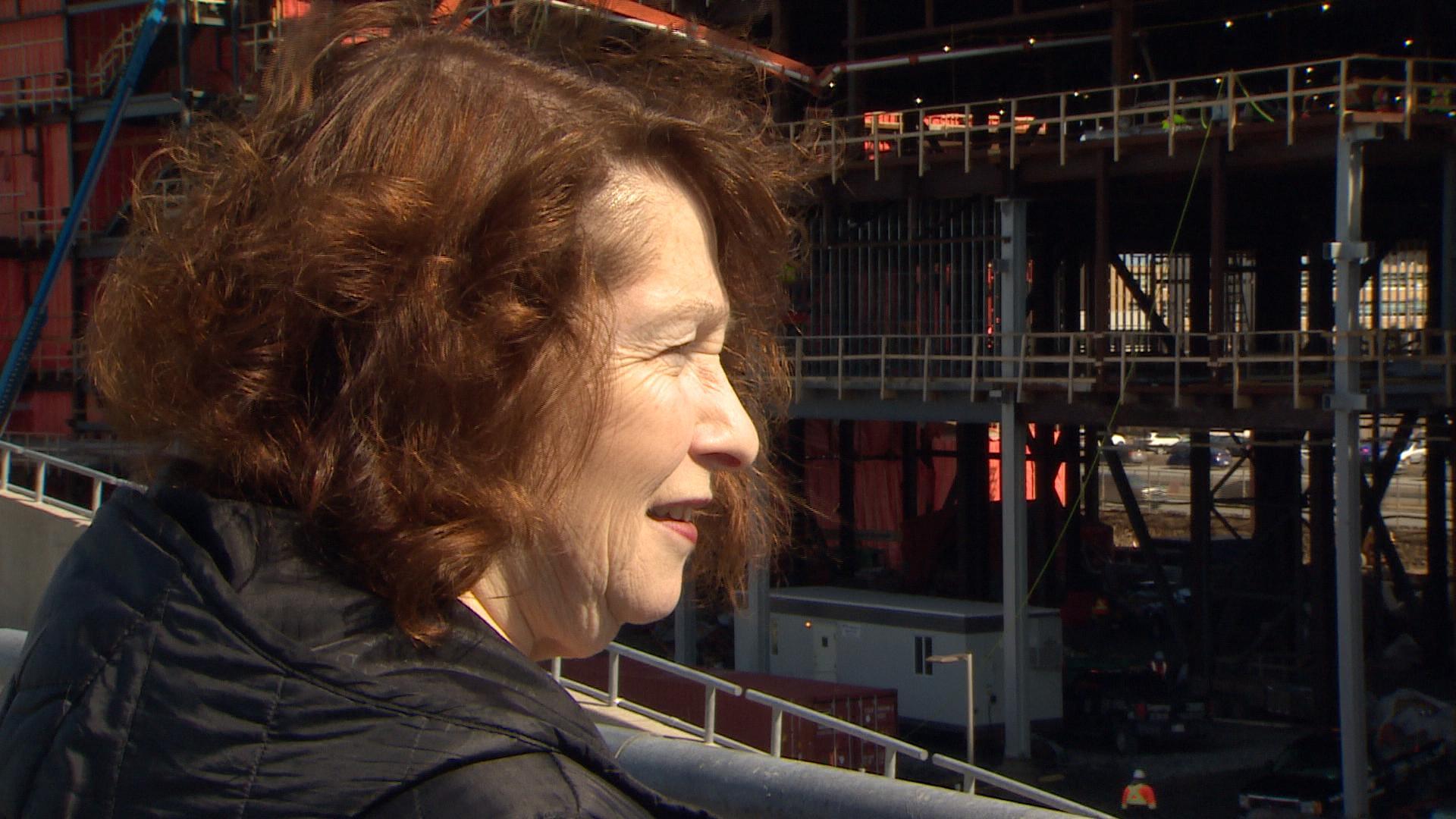
“It’s a very complex building,” Browne said.
“As soon as you start getting into laboratories, you’re not building offices, you’re not just building regular classrooms. You’re building labs, you’re building fume hoods, you’re putting in mechanical systems that have never been used in this province before.”

The Core Science Facility is scheduled to open for the fall semester in 2020.
The finished building will be state of the art, while featuring some distinctly Newfoundland touches. The exterior walls are shaped like icebergs, and the skeleton of a blue whale, which washed ashore in Rocky Harbour, will be suspended from the ceiling.
With the steelwork now complete, the shape of what’s to come is starting to become clear. But Browne said the story of this building is just beginning.
“With a science building, the exciting part about it is you never know what’s going to happen here,” she said. “You could find a cure for cancer, you could discover different things. And when we build these, we build for the future.”
Nerves of Steel - watch the full special feature
